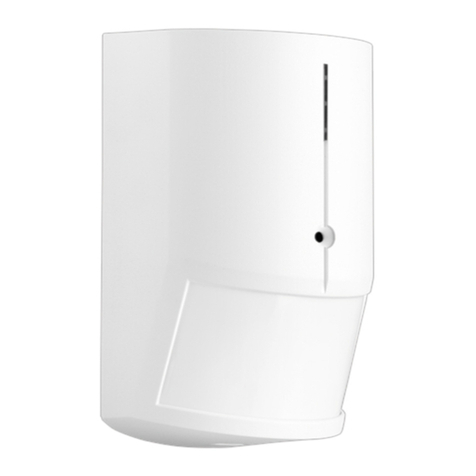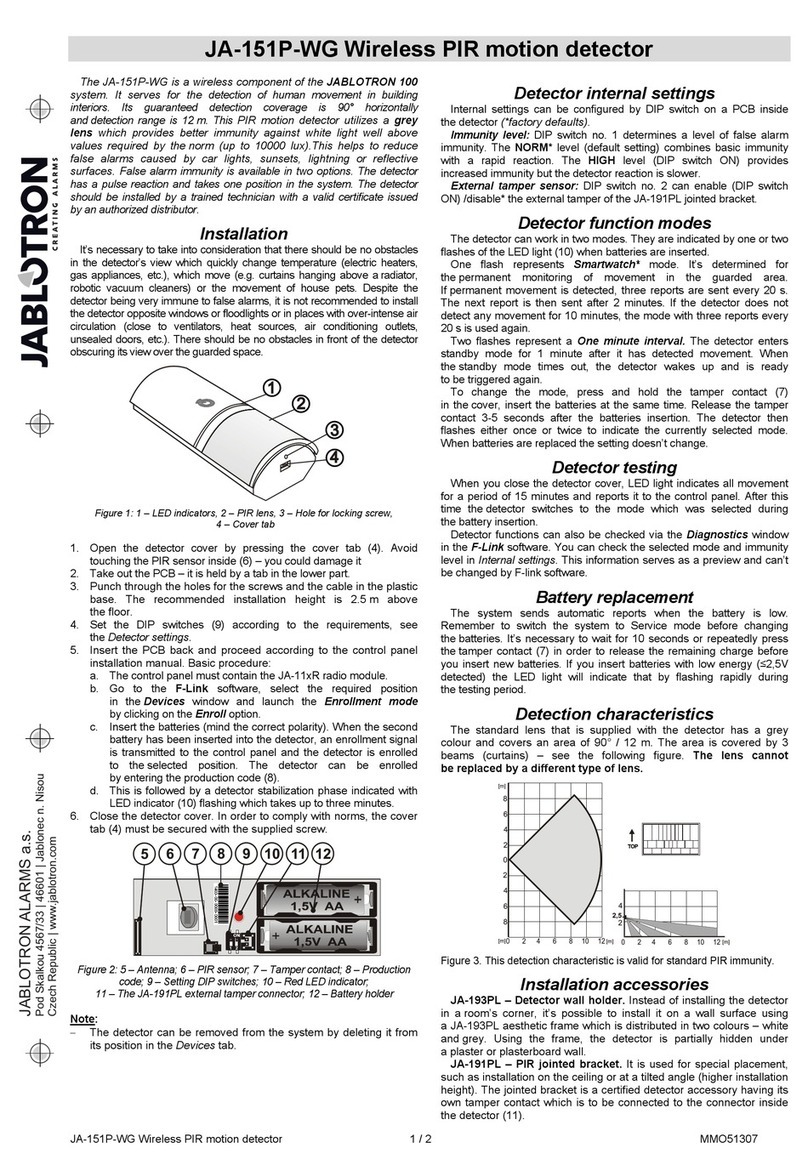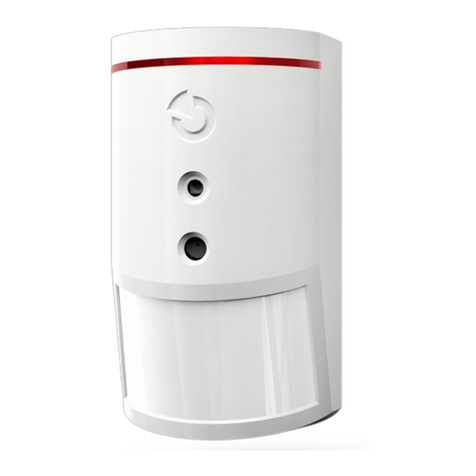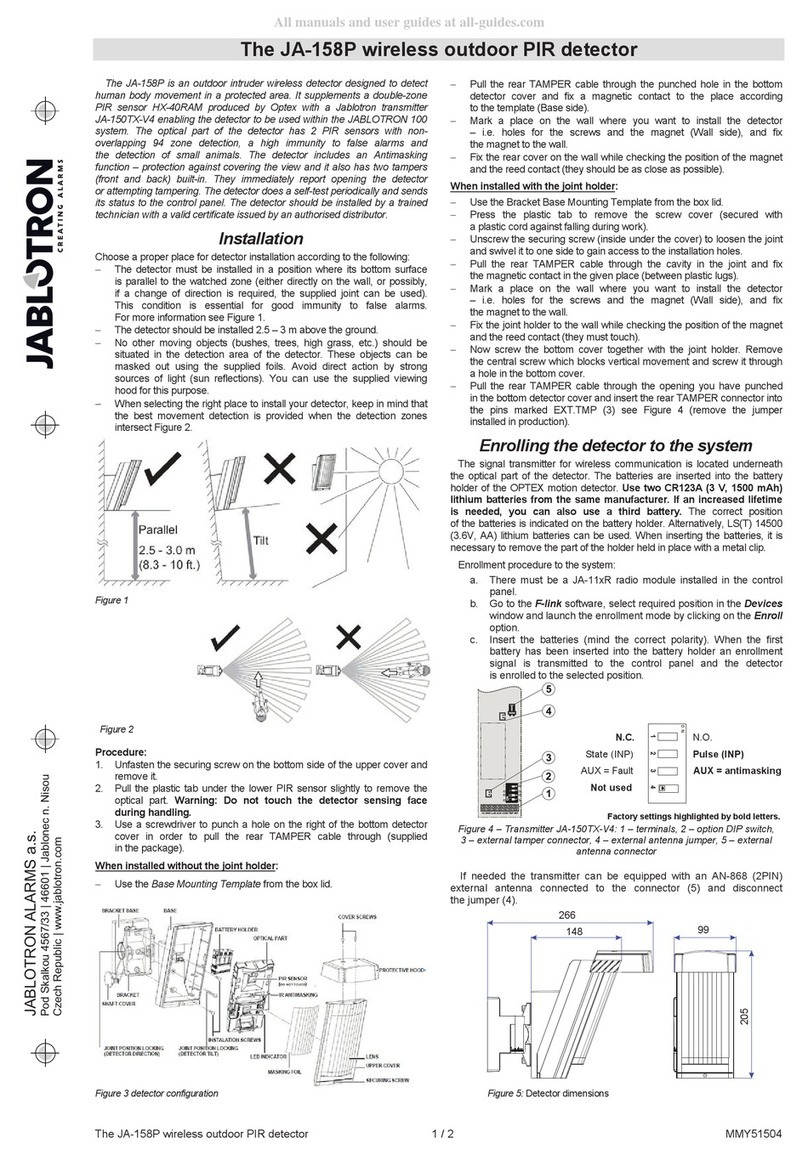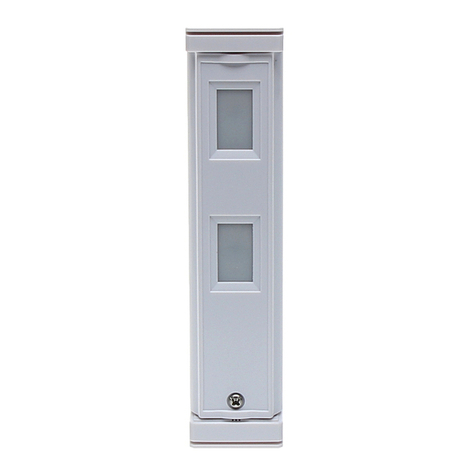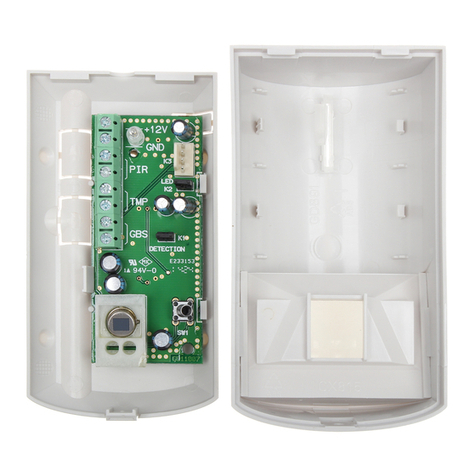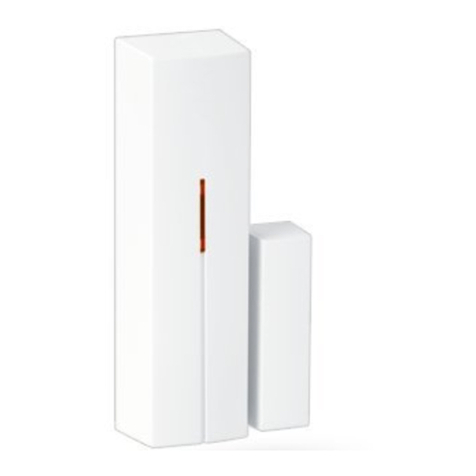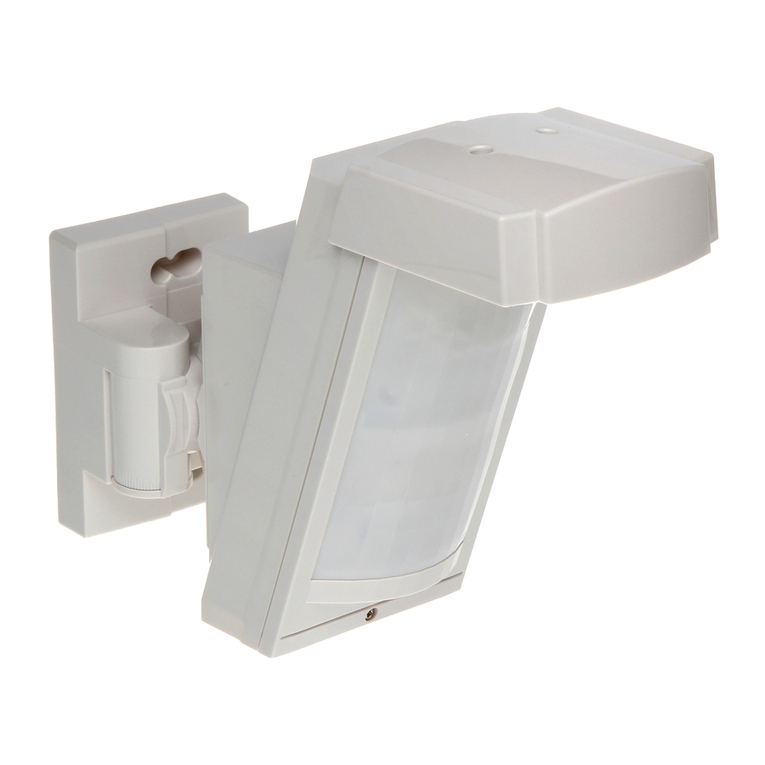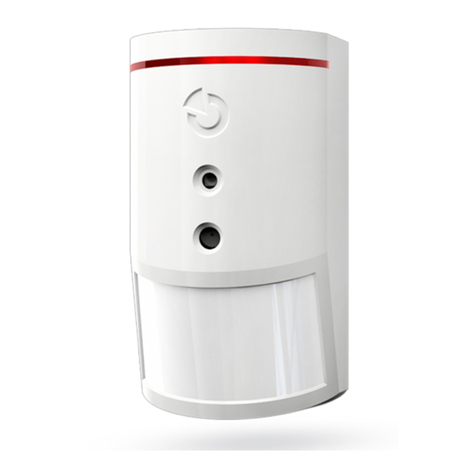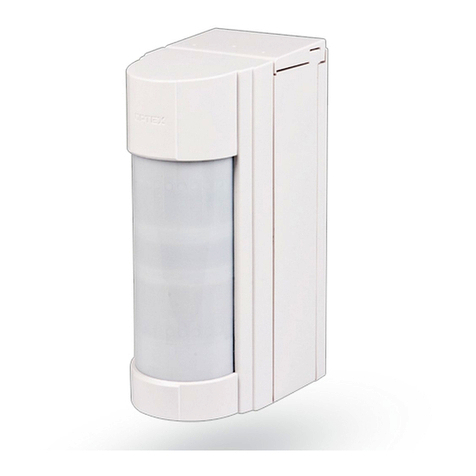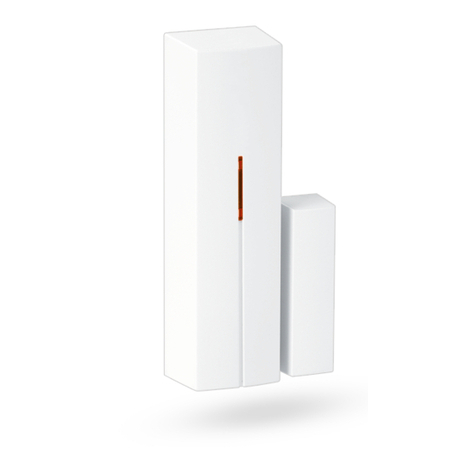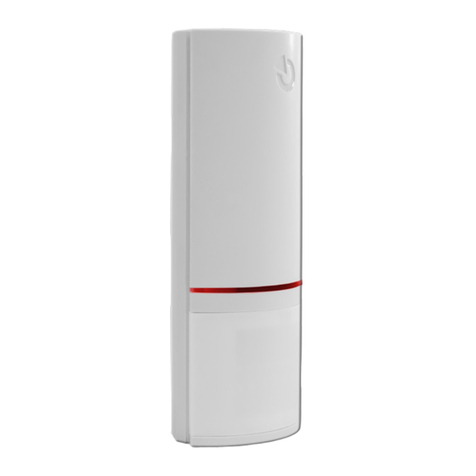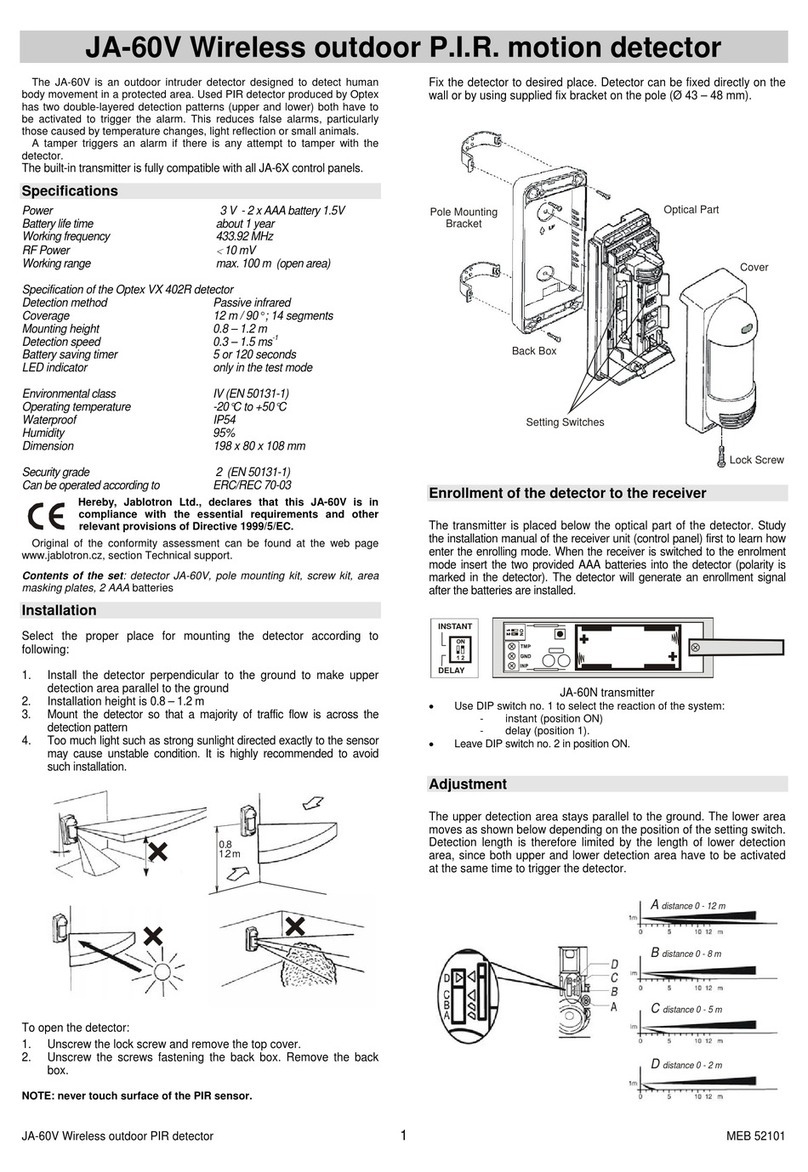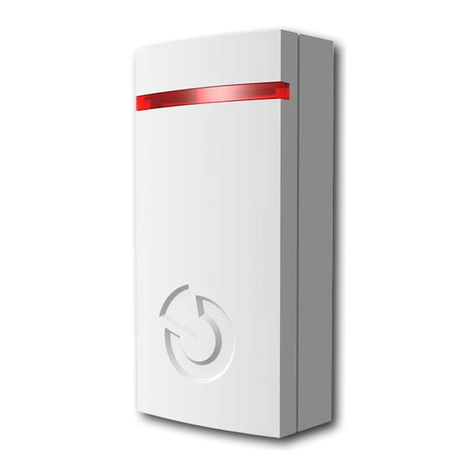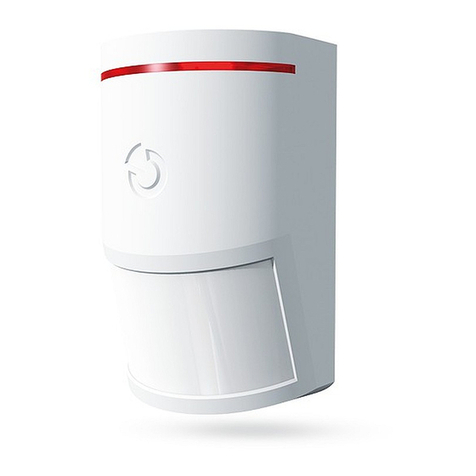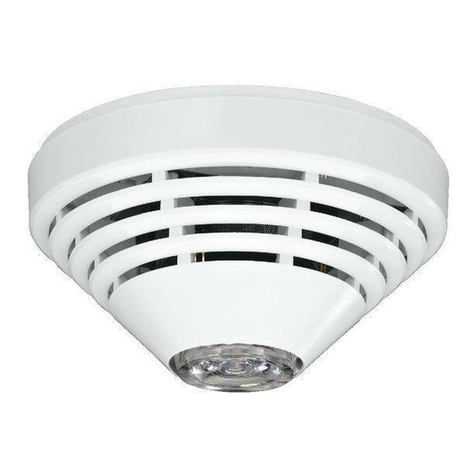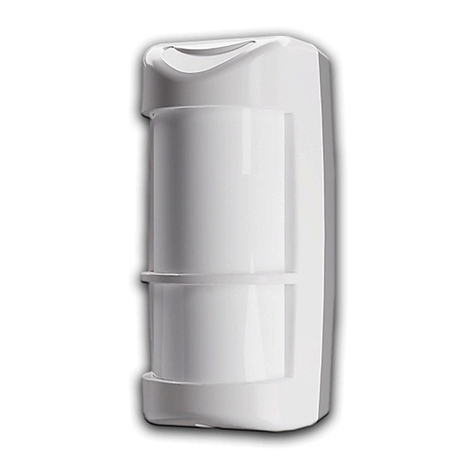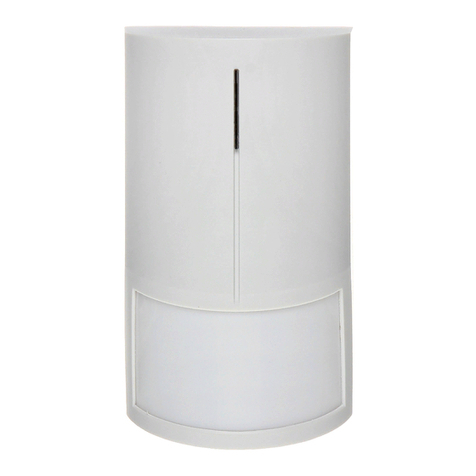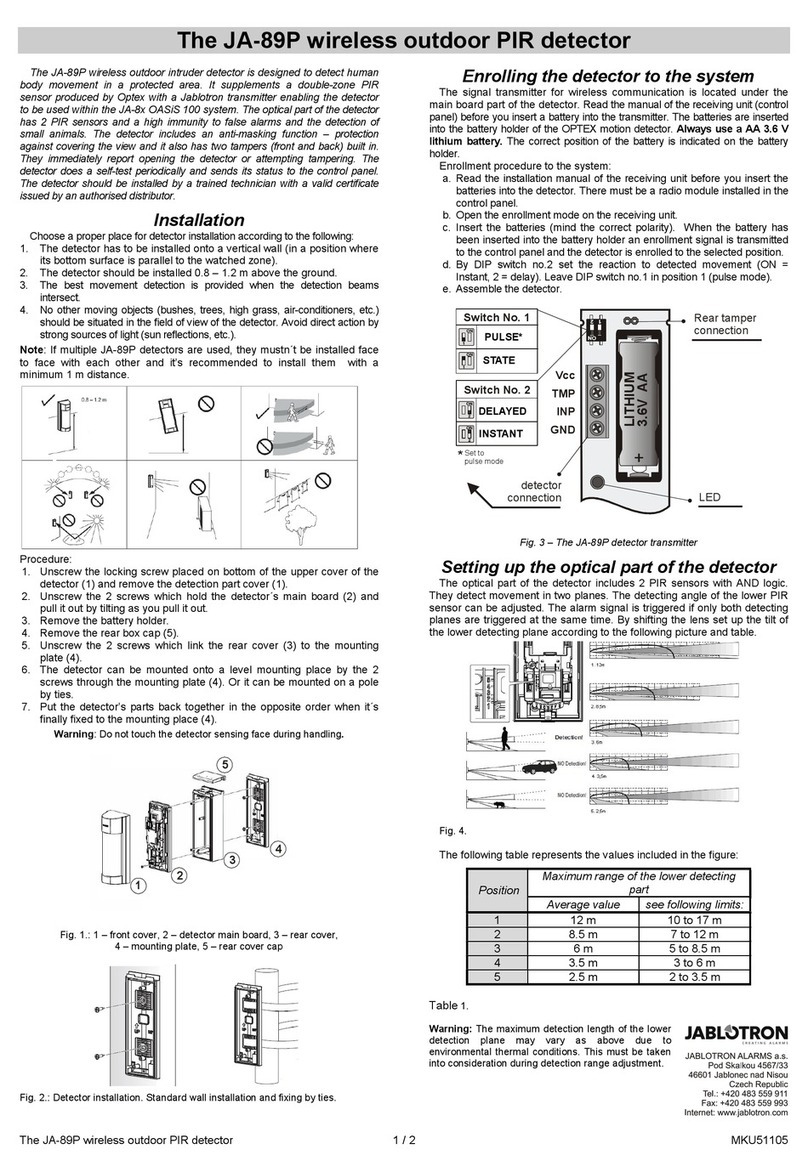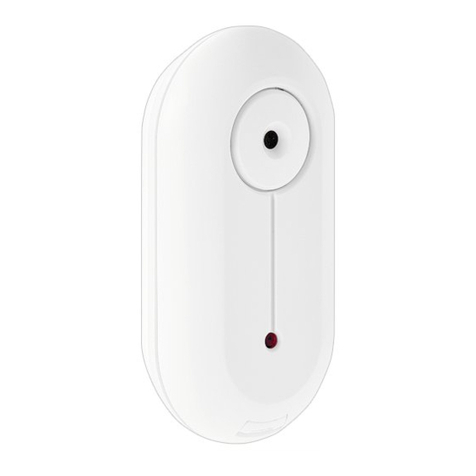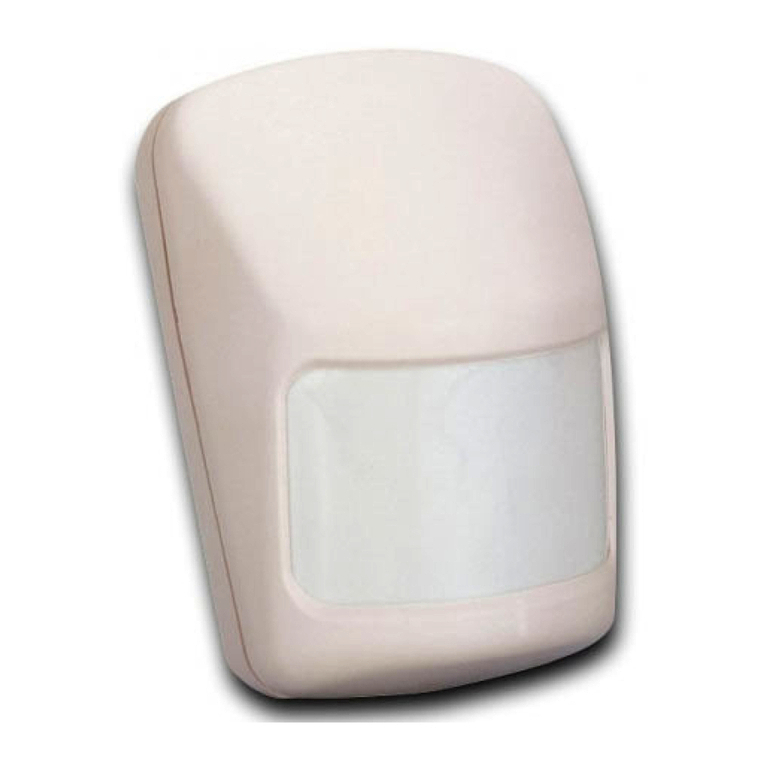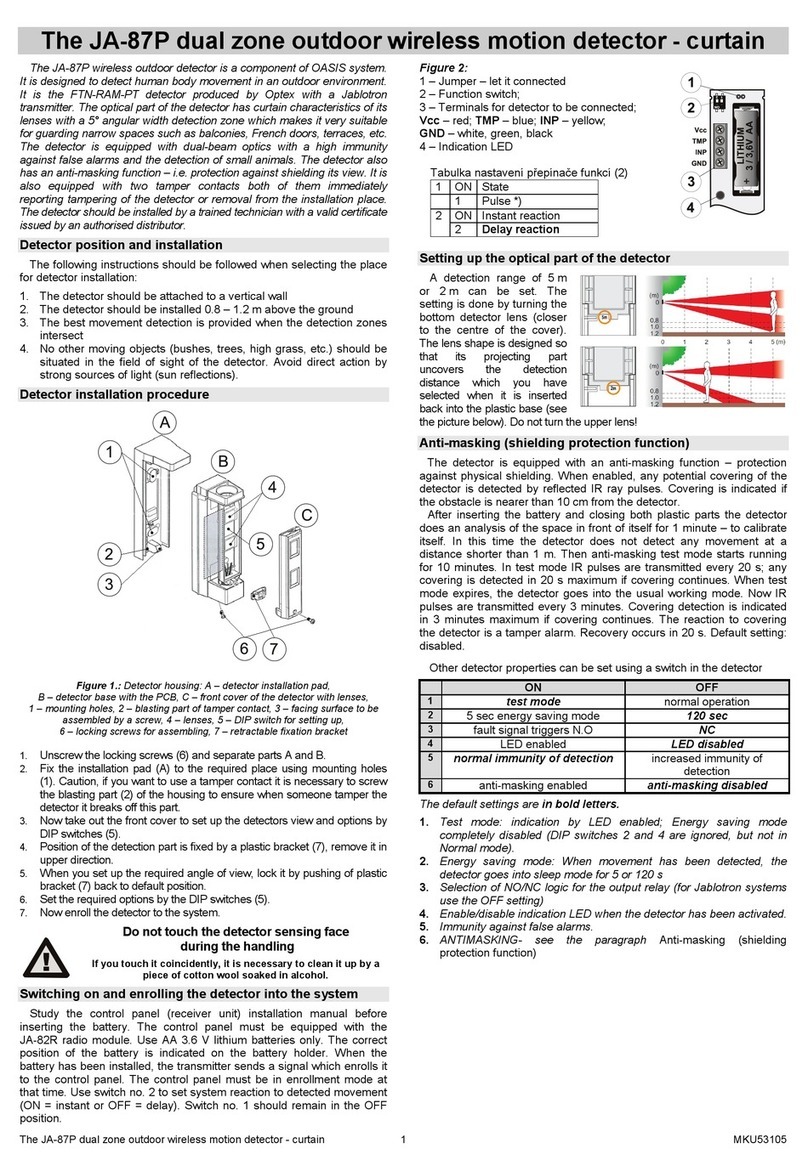The JA-159P wireless outdoor PIR detector
The JA-159P wireless outdoor PIR detector 2 / 2 MMY51809
Fig. 4.
The following table represents the values included in the figure:
Position Maximum range of the lower detecting part
Average value see following limits:
1 12 m 10 to 17 m
28.5m 7to12m
36m 5to8.5m
43.5m 3to6m
52.5m 2to3.5m
Table 1.
Warning: The maximum detection length of the lower detection plane
may vary as above due to environmental thermal conditions. This must
be taken into consideration during detection range adjustment.
Fig. 5.
The detection area angle is 90°. The direction can be adjusted
from position A – G by rotating the detector´s plastic part. Each step
is marked. The detector lens covers the whole angle of 180°
- therefore it does not require any adjustment.
You can restrict the detection angle by adhesive masking strips
supplied with the package. This way you can eliminate problematic
parts of the detection area. The strips are to be stuck on the relevant
lens segment from the inner side.
The PIR detection sensitivity can be configured by a 3-pole switch
located under the upper sensor. The letters correspond to sensitivity
levels as follows:
Llow – low sensitivity applicable to bad conditions
Mmiddle – medium sensitivity
Hhigh – high sensitivity
Other parameters can be configured using a DIP switch
(factory settings highlighted by bold letters):
NORM TEST
120s 5s
N.C.
N.O.
LED OFF LED ON
Antimasking OFF Antimasking ON
The LED (DIP switch no. 4) serves for PIR detector testing
– checking the coverage. The detector always sends information
to the control panel. For normal detector operation we recommend
the LED to be turned off in order to save the battery.
The power save mode can be set up by DIP switch no. 2, select
5 s / 120 s. It determines the time when detector is able to detect
movement again and send a new activation signal.
When Antimasking is ON (DIP switch no. 5), the detector monitors
any masking of its view. When the power is turned on the detector
starts with a 1 minute mode when the detector scans
the environment and then starts a 10 minute test mode (antimasking
is triggered when obstruction of the detector takes at least 20 sec).
In normal operation mode the detector has to be obstructed at least
for 3 minutes. Evaluation of the obstructed detector signal depends
on system status.
When the system or a section, where the detector has been
assigned, is unset, a fault is triggered. When the system is set it
will trigger fault + instant zone alarm. Activation of the detector
obstruction signal (masking) is displayed with a yellow indication LED
(which flashes briefly 3x every second).
Testing (coverage test)
DIP switch no. 1 is set to TEST mode as a factory default.
We recommend switching DIP switches no. 2 and no. 4 to the ON
position for testing purposes. Close the detector.
Test the detection range of the protected area and immunity
out of the protected area. Bear in mind the potential change
of detecting distance is influenced by the environment.
Each movement is indicated by the red indication LED and it sends
the information to the control panel (can be checked by F-Link
software in the Diagnostics tab).
When the testing procedure is finished, move the DIP switch no. 1
to the NORM position. Also, we recommend turning off the LED
indication and setting the power save mode to 120 s to prolong
the battery life.
Troubleshooting
Problem Cause of problem Solution
The detector
gives false
intrusion
alarms
Lower detection area is
unnecessarily long.
Set up the detection area
properly.
The detector is exposed
to direct/reflected light
(sun light, car lights etc.).
Remove the reflector,
mask the area exposed to
the reflection of light or
change the detector
position.
There is a moving object
in the area (laundry on
the clothes-line, plants
etc.).
Remove the moving
object or change the
detector position. Or put
the stickers on part of the
lens to avoid detection in
a problematical place.
Occasionally
no reaction
to
movement
Lower detection area is
unnecessarily short
Set the detection area
properly
Sensitivity is set to low
(L).
Change sensitivity to
medium (M) or high (H).
The detector is in battery-
save mode
While testing operation,
set the battery-save timer
to 5 seconds.
Detector
ignores any
movements
Low battery Replace the battery
LED indicator does not
indicate movement
Indication is turned off,
turn DIP switch no. 4 ON
LED indicator indicates
movement but the system
doesn’t react
The control panel is out of
range, check the battery,
try to reposition detector
or control panel
Technical specifications
Power: 2x Lithium battery type CR123A (3.0 V/1.4 Ah)
Please note: Batteries are not included
Current consumption (nominal/maximal) 35.5 μA/55 mA
Average battery lifetime 2 x CR123A, approx. 3 years
Communication band 868.1 MHz
RF range – communication range up to 300 m (open area)
Optex detector parameter:
Detection characteristics 12 m/90 °; 16 segments
Recommended installation height 0.8 – 1.2 m
Object motion speed 0.3 – 1.5 ms-1
Battery saving timer adjustable 5 s or 120 s
IV
according to Optex
-20 °C to +60 °C
IP55
95 %
186 x 71.3 x 105.5 mm
500 g
Operational environment according to EN 50131-1
Security grade
Operating temperature range
Detector cover conformance
Max. relative humidity of the environment
Dimensns
Weight
Complies with ETSI EN 300 220, EN 50130-4,
EN 55022, EN 60950-1
Can be operated according to ERC REC 70-03
JABLOTRON ALARMS a.s. hereby declares that the JA-159P
composed of Optex detector VXI-RAM-NB and radio module
JA-150TX-VXI is in a compliance with the relevant Union
harmonisation legislation: Directives No: 2014/53/EU, 2014/35/EU,
2014/30/EU, 2011/65/EU. The original of the conformity
assessment can be found at www.jablotron.com - Technical Section
Downloads.
Note: Although this product does not contain any harmful materials
we suggest you return the product to the dealer or directly
to the producer after use.
